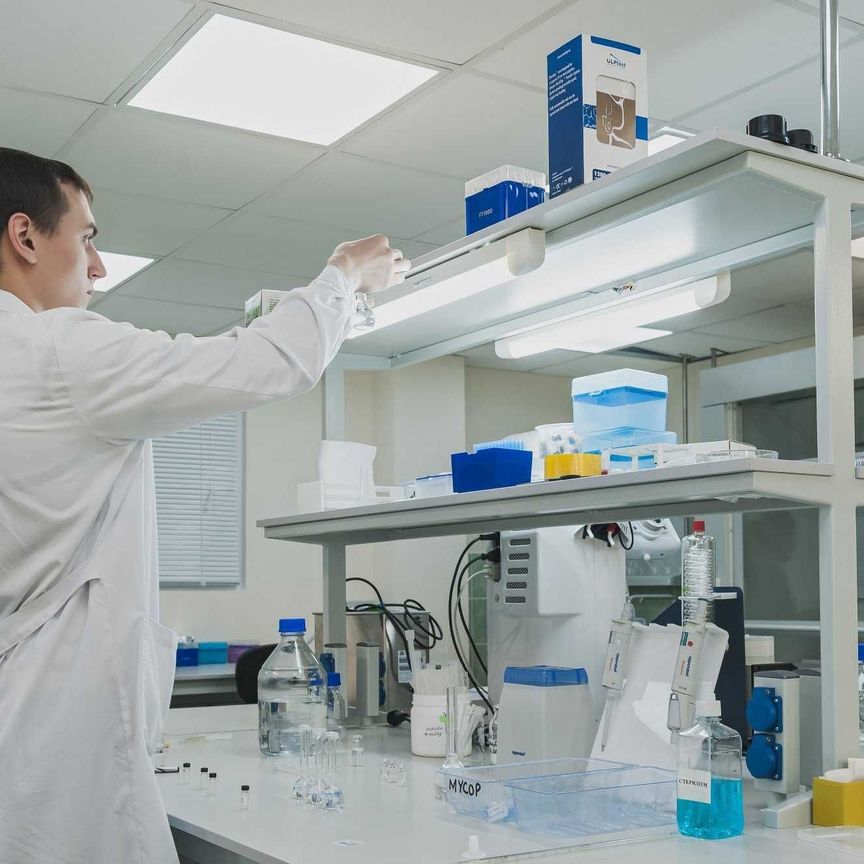About US

About US
Grounded in science has dedicated years of research
Over 12 years “Etalon Cosmetics” LLC is engaged in production and supply ingredients, which displaying a variety of health-promoting properties and modulating diverse biological functions. We started our innovation activities by supplying active, functional ingredients for cosmetics, and continue to do so, but we are in constant development, producing and supplying ingredients for health & wellness.
On our website we would like to present to your attention a unique stereospecific product TAXIFOLIN (synonym DIHYDROQUERCETIN), which belongs to the category of polyphenols, the group of dihydroflavonols.
TAXIFOLIN (synonym DIHYDROQUERCETIN) is a safe, natural molecule with strong antioxidant and anti-inflammatory activity. TAXIFOLN has opportunities to reach consumers in search of general health and wellness protection, as well as those who opt for targeted solutions, looking for the ultimate wellness solutions.
On our website we would like to present to your attention a unique stereospecific product TAXIFOLIN (synonym DIHYDROQUERCETIN), which belongs to the category of polyphenols, the group of dihydroflavonols.
TAXIFOLIN (synonym DIHYDROQUERCETIN) is a safe, natural molecule with strong antioxidant and anti-inflammatory activity. TAXIFOLN has opportunities to reach consumers in search of general health and wellness protection, as well as those who opt for targeted solutions, looking for the ultimate wellness solutions.
Mission

Mission
Our TAXIFOLIN will seek the game changers, disruptors and pioneers who are unlocking innovation in the Nutrition and Cosmetic development industries. Our expertise gives manufacturers an edge in making products that address a complex set of consumer demands, such as label-friendly, plant-based and other "free-from" formulation challenges. Sitting at the crux of reformulation and innovation, it represents the way "Etalon Cosmetics" with its innovative ingredients helps our customers succeed.
Vision
We are committed to being your trusted, reliable, and innovative partner and informed resource. We promise to deliver superior service and products and to live our values of integrity, accountability, leadership, legacy, diversity, and passion every day.
LLC "Etalon Cosmetics" COMBINES THE TIME HONORED PRACTICES OF EXTRACTING INGREDIENTS WITH THE MODERN TECHNIQUES OF ANALYSIS, TRACEABILITY, AND THOROUGH QUALITY ASSURANCE.
DESCRIPTION – TAXIFOLIN
Like herbal isolates, the extracts of different parts of larch trees contain a variety of compounds, some of which are bioactive molecules. It is clear from all discussed results, that the forest biomass in general and the residues of wood transformation in particular, represent the important natural resources of bioactive polyphenol - TAXIFOLIN.
TAXIFOLIN presents a unique molecule structural feature known as stereospecific, optically active that is chirality which distinguishes it from all other classes of polyphenols (flavonoids).
Soluble in organic solvents, compound of polyphenol structure – bio-catalyst TAXIFOLIN has the significant potential of antioxidant and anti-inflammatory activities. Enzymatic form of which belongs to the class of oxidoreductases.
Ability to keep ageing at bay: TAXIFOLIN is able to switch a specific category of genes back on that not only made cells look youthful, but start to behave more like young cells and start dividing. The discovery how TAXIFOLIN performs the work could well contribute to a healthier ageing approach, in which degenerative effects associated with getting old could be alleviated.
TAXIFOLIN presents a unique molecule structural feature known as stereospecific, optically active that is chirality which distinguishes it from all other classes of polyphenols (flavonoids).
Soluble in organic solvents, compound of polyphenol structure – bio-catalyst TAXIFOLIN has the significant potential of antioxidant and anti-inflammatory activities. Enzymatic form of which belongs to the class of oxidoreductases.
Ability to keep ageing at bay: TAXIFOLIN is able to switch a specific category of genes back on that not only made cells look youthful, but start to behave more like young cells and start dividing. The discovery how TAXIFOLIN performs the work could well contribute to a healthier ageing approach, in which degenerative effects associated with getting old could be alleviated.
According the studies the versatile thing is that the sixty-five genes, including a few key detoxification enzymes (NQO1, GSTM1) and an antioxidant enzyme (TXNRD1), were up-regulated and 363 genes were down-regulated in the presence of TAXIFOLIN. In view of the finding that selected genes contained antioxidant response element (ARE), it was stressed that TAXIFOLIN modulates chemopreventive genes through activation of the ARE.
TAXIFOLIN can inhibit cellular inflammation through the activation of PPARg and AMPK (Adenosine Monophosphateactivated Protein Kinase), an upstream activator of the anti-inflammatory gene transcription factors SIRT1 (Sirtuin 1).
The major microbial metabolite of TAXIFOLIN is 3, 4 Dihydroxyphenylacetic Acid (DOPAC or DPHAA). DOPAC is released in the colonic lumen from TAXIFOLIN metabolism by the microbiota and is subsequently absorbed across the colonic epithelium to the systemic circulation. As DOPAC is also the major metabolite of dopamine in the central nervous system, most of the studies evaluating the cellular positive effect of DOPAC have been carried out in culture of neuronal cells.
TAXIFOLIN can inhibit cellular inflammation through the activation of PPARg and AMPK (Adenosine Monophosphateactivated Protein Kinase), an upstream activator of the anti-inflammatory gene transcription factors SIRT1 (Sirtuin 1).
The major microbial metabolite of TAXIFOLIN is 3, 4 Dihydroxyphenylacetic Acid (DOPAC or DPHAA). DOPAC is released in the colonic lumen from TAXIFOLIN metabolism by the microbiota and is subsequently absorbed across the colonic epithelium to the systemic circulation. As DOPAC is also the major metabolite of dopamine in the central nervous system, most of the studies evaluating the cellular positive effect of DOPAC have been carried out in culture of neuronal cells.
Polyphenols such as TAXIFOLIN offer nourishment for selected, helpful gut bacteria resulting in significant growth in populations, while inhibiting pathogenic, harmful bacteria. Resulting metabolites are absorbed into the colon wall, significantly increasing bioassessibility and bioavailability.
Based on innovative simple (means cost effective) technology, we provide natural ingredient to our customers in many diverse markets being in a position to supply our customers with tailor-made products and complete-solution packages, with a variety of applications.
We are pleased to provide our brochures. Consumers are increasingly seeking products with nutrients that can help support their health. We believe that TAXIFOLIN’ education is important not only for those looking to promote their health and nutrition, but also for anyone hoping to become a more informed, health-conscious consumer. The more you know about what’s consumed by you, the better equipped you will be to make healthy choices, no matter what your personal goals are.
Based on innovative simple (means cost effective) technology, we provide natural ingredient to our customers in many diverse markets being in a position to supply our customers with tailor-made products and complete-solution packages, with a variety of applications.
We are pleased to provide our brochures. Consumers are increasingly seeking products with nutrients that can help support their health. We believe that TAXIFOLIN’ education is important not only for those looking to promote their health and nutrition, but also for anyone hoping to become a more informed, health-conscious consumer. The more you know about what’s consumed by you, the better equipped you will be to make healthy choices, no matter what your personal goals are.
Taxifolin (Dihydroquercetin) is approved in USA for the use in dietary supplements according Dietary Supplement Health and Education Act of 1994 as well as in cosmetics and hygiene products.
TAXIFOLIN-RICH EXTRACT (Taxifolin (Dihydroquercetin)) was studied by the EFSA (European Food Safety Agency) NDA Panel (EFSA Panel on Dietetic Products, Nutrition and Allergies). Panel concludes that taxifolin-rich extract from Dahurian Larch, is safe under the proposed conditions of use. (EFSA Journal 2017;15(2):4682).
COMMISSION IMPLEMENTING REGULATION (EU) 2017/2470 of 20 December 2017 establishing the Union list of novel foods in accordance with Regulation (EU) 2015/2283 of the European Parliament and of the Council on novel foods: TAXIFOLIN-RICH EXTRACT - Specified food category - Food Supplements as defined in Directive 2002/46/EC intended for the general population, excluding infants, young children, children and adolescents younger than 14 years. Maximum levels: 100 mg/day. (L 351/72 Official Journal of the European Union 30.12.2017).
COMMISSION IMPLEMENTING REGULATION (EU) 2018/461 of 20 March 2018 authorising an extension of use of taxifolin-rich extract as a novel food under Regulation (EU) 2015/2283 of the European Parliament and of the Council, and amending Commission Implementing Regulation (EU) 2017/2470. (L 78/7 Official Journal of the European Union 21.3.2018)
TAXIFOLIN-RICH EXTRACT (Taxifolin (Dihydroquercetin)) was studied by the EFSA (European Food Safety Agency) NDA Panel (EFSA Panel on Dietetic Products, Nutrition and Allergies). Panel concludes that taxifolin-rich extract from Dahurian Larch, is safe under the proposed conditions of use. (EFSA Journal 2017;15(2):4682).
COMMISSION IMPLEMENTING REGULATION (EU) 2017/2470 of 20 December 2017 establishing the Union list of novel foods in accordance with Regulation (EU) 2015/2283 of the European Parliament and of the Council on novel foods: TAXIFOLIN-RICH EXTRACT - Specified food category - Food Supplements as defined in Directive 2002/46/EC intended for the general population, excluding infants, young children, children and adolescents younger than 14 years. Maximum levels: 100 mg/day. (L 351/72 Official Journal of the European Union 30.12.2017).
COMMISSION IMPLEMENTING REGULATION (EU) 2018/461 of 20 March 2018 authorising an extension of use of taxifolin-rich extract as a novel food under Regulation (EU) 2015/2283 of the European Parliament and of the Council, and amending Commission Implementing Regulation (EU) 2017/2470. (L 78/7 Official Journal of the European Union 21.3.2018)
LLC “ETALON COSMETICS”
Address
143072, Russian Federation, Moscow region, Odintsovo district, VNIISSOK village, Industrial park zone.

